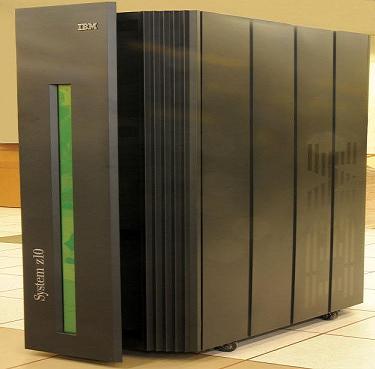SMF
System Management Facilities
 Please! Verify all details or suggestions with the appropriate vendor and / or vendor's manuals. Please! Verify all details or suggestions with the appropriate vendor and / or vendor's manuals.
IBM System Management Facility (SMF) is a component of IBM's
z/OS for mainframe computers, providing a standardised method for
writing out records of activity to a file (or data set to use a z/OS
term). SMF provides full "instrumentation" of all baseline activities
running on that IBM mainframe operating system, including I/O, network
activity, software usage, error conditions, processor utilization, etc.
One of the most prominent components of z/OS that uses SMF is
the IBM Resource Measurement Facility (RMF). RMF provides performance
and usage instrumentation of resources such as processor, memory, disk,
cache, workload, virtual storage, XCF and Coupling Facility. RMF is
technically a priced (extra cost) feature of z/OS. BMC sells a
competing alternative, CMF.
SMF forms the basis for many monitoring and automation
utilities. Each SMF record has a numbered type (e.g. "SMF 120" or "SMF
89"), and installations have great control over how much or how little
SMF data to collect. Records written by software other than IBM
products generally have a record type of 128 or higher. Some record
types have subtypes - for example Type 70 Subtype 1 records are written
by RMF to record CPU activity.
Source: Wikipedia
SMF parmlib member
SMFPRMxx (system management facilities (SMF) parameters)
z/OS V1R12.0 MVS Initialization and Tuning Reference
SA22-7592-21
The SMFPRMxx member allows you to control how system management facilities (SMF) works at your installation.
You can use SMFPRMxx parameters to:
Identify the system on which SMF is active.
Specify global values for interval recording and
synchronization that SMF, RMF™, and other requestors can use to
schedule the execution of their interval functions.
Specify the data sets or log streams to be used for SMF recording.
Specify the system identifier to be used in all SMF records.
Select the SMF record types and subtypes SMF is to generate.
Allow the operator to change the SMF parameters established at IPL.
Specify the job wait time limit.
Specify whether SMF is to invoke installation-supplied SMF exit routines.
Specify whether the SMF dump program is to attempt to recover from abends.
Specify the system response when SMF has used all of the buffered storage in its address space and is recording on data sets.
Specify the system response when the last SMF data set is filled and no other data sets are available for use.
Specify the amount of real time that SMF allows data to remain
in an SMF buffer before it is written to a recording data set or a log
stream.
Specify the installation default MEMLIMIT.
Specify whether only registration data and not usage data is to be recorded when using the IFAUSAGE macro.
|Specify valid user exists for the IFASMFDP and IFASMFDL |programs.
Specify whether or not to suppress empty execute channel program (EXCP) using the EMPTYEXCPSEC parameter.
Specify whether SMF record flood support is active |and the filter for the SMF record flood.
SMFPRMxx (system management facilities (SMF) parameters)
Search result description:The SMFPRMxx member allows you to control how
system management facilities (SMF) works at your installation. You can
use SMFPRMxx parameters to:. Read more
Creating SMF Data Sets
You should create at least two SMF data sets to store the
system and job-related information that SMF collects. SMF data sets
should be RACF-protected. Each one is identified by a 1-44 character
data set name.
SMF data-gathering routines fill the data sets one at a time.
While the gathering routines write records on one data set, SMF can
write out or clear the others. SMF continues to write records while it
can find an empty inactive data set when the active data set becomes
full (see Using SMFPRMxx parameters).
Read more
Sample JCL Statements for Allocating the SMF Data Sets
//CREATE EXEC PGM=IDCAMS
//SYSPRINT DD SYSOUT=A
//SYSIN DD *
DEFINE CLUSTER (NAME(SYS1.MANX) +
VOLUME(xxxxxx)
+
NONINDEXED
+
CYLINDERS(nn)
+
REUSE
+
RECORDSIZE(4086,32767)
+
SPANNED
+
SPEED
+
CONTROLINTERVALSIZE(nnnn) +
SHAREOPTIONS(2))
|





